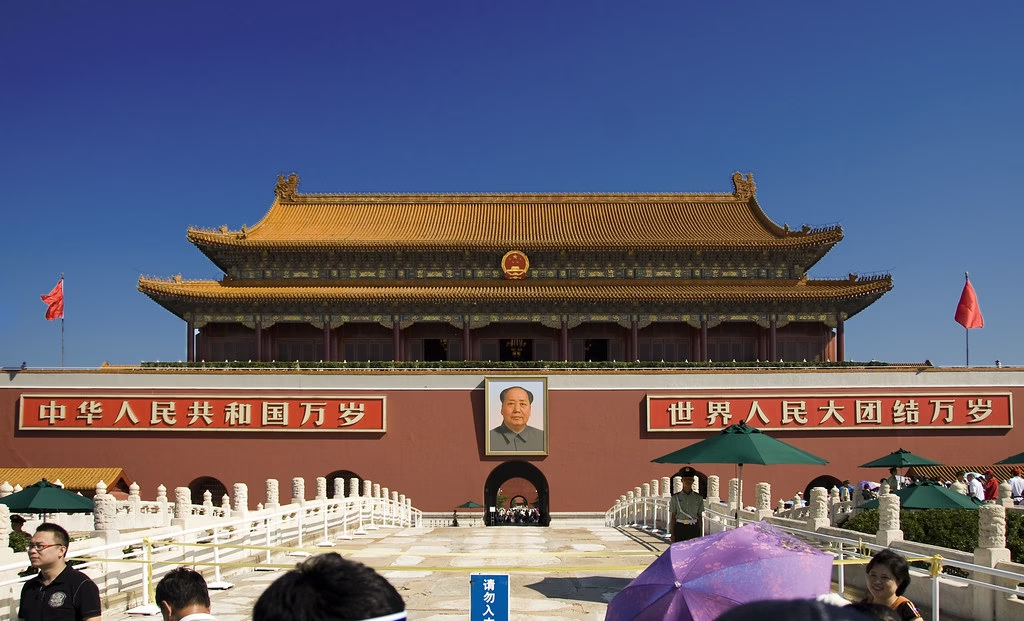China is often held to be a model of economic growth, and by some to be worthy of emulation. Looking behind the curtain, one finds an investment driven economy build on a lot of debt. At the same time, the official national government only holds about 25% of GDP in official bonds. How do these facts fit together in a communist economy with Chinese characteristics? Read more about the Chinese public debt and how the national and local government cooperate in hiding their true financial conditions.

Chinese national government
The Chinese tradition of a strong centralized government did not end with the advent of the communist party. Following this tradition, the party manages nearly all public, (party) revenue. This enables the central government to have a low debt balance on the official books by delegating the responsibilities following from the revenue to local governments. This practice is an efficient control mechanism and enables to play the benevolent emperor that intervenes on behalf of the people against the “evil” governor. But if something were to go wrong, keeping a short financial leach on the provinces leads to concomitant budget shortfalls that have to be covered one way or the other.
Don’t be fooled, the recent refinancing of local government debt by the central government only suffices for about two years of interest. It is enough only for uncovering the extent of financing needs. The combination of too low a revenue with ever-increasing budgets to enable the governor to compete within the party leads to a certain creativity with in the local government financing.
Local government finance
As the local government has little ordinary independent revenues — for it has no local income or sales tax, and it can not sell municipal bonds — it has to find other ways of financing its budget. The legal option would be a raise in property taxes. But it is public knowledge that the supply of Chinese housing far exceeds the demand. And little light is at the end of the tunnel given the projected (official) demographic data. Impairing an already weak housing sector with an additional tax burden is neither in public interest nor in the interest of the party.
To circumvent these restrictions of Chinese public debt, local governments financed themselves by selling of public land to property developers in a practice called land finance. By requiring the land fees and price before development even started, the local government raised a lot of short term revenue. It also leads to an over exploitation and the oversupply in the housing sector as discussed above.
Now that the music seems to get slower, the short duration bites back. As a consequence, the Keynesian task of countercyclical fiscal policy is hardly possible without creative financing in the form of local government financing vehicles(LGVF).
Local government financing vehicles
Formally, LGFV are in the business of developing industrial parks or urban infrastructure. For that, they borrow i the capital markets with the implicit understanding that local governments supply them with sufficient assets. You might expect a direct guarantee, but the Guarantee Law prohibits local governments from such a transparent maneuver. Instead, they can rely on transfer pricing to transfer funds from (naive) investors into the public fisc. Now someday the LGFVs have to pay out more bonds than they sold. That day was in Q4 2023.

Conclusion
In conclusion, LGFV are an exercise in creative structuring to allow local governments to hold debt by a different method. That allows them to fulfill requirements by the central government without the necessary budget allocated. LGFVs only have an implicit guarantee, which is unlikely to hold up. Every level of government is complicit in circumventing their own law and contributes to the opacity nurturing corruption. If you can read Pravda, enjoy the latest IMF report on China.
76. The [Chinese] authorities reiterated their commitment to improve data quality but raised significant concerns about the new Data Adequacy Assessment (DAA) framework.
…
The authorities disagreed with the GFS ratings, noting that they abide by the Budget Law—debt not included in the budget is not considered government debt and the GG budget is compiled according to the functional classification of expenditure. They also argued that delays in publication of LG budget data are due to the needed approval of the local people’s congress.
…
I strongly recommend that you do not trust official Chinese data. Instead, consider tax receipts, which are harder to cook than GDP or debt data. Thirdly, interpret the muted Chinese responses to financial problems with caution.
At last, we did not even touch Chinese demographics and its financial consequences. With regard to the Keynesian beauty contest, the total Chinese public debt to GDP is comparable to Japan … with worse prospects.



